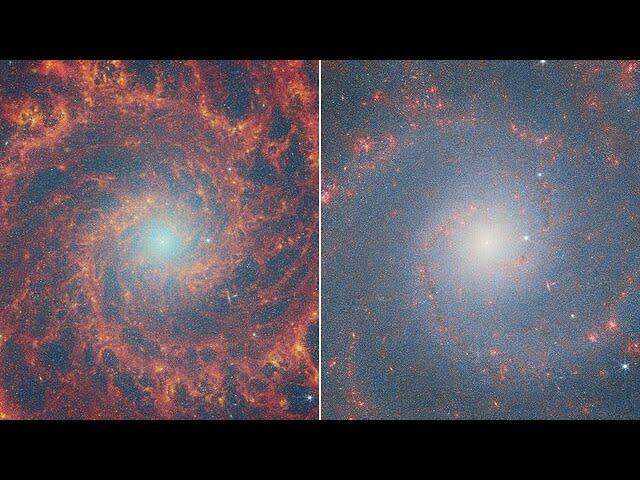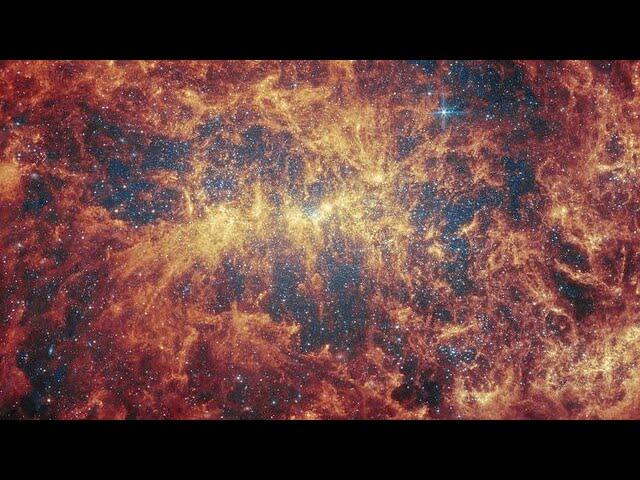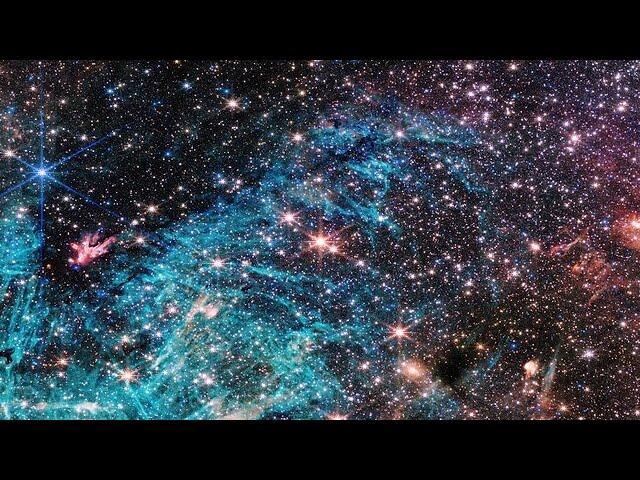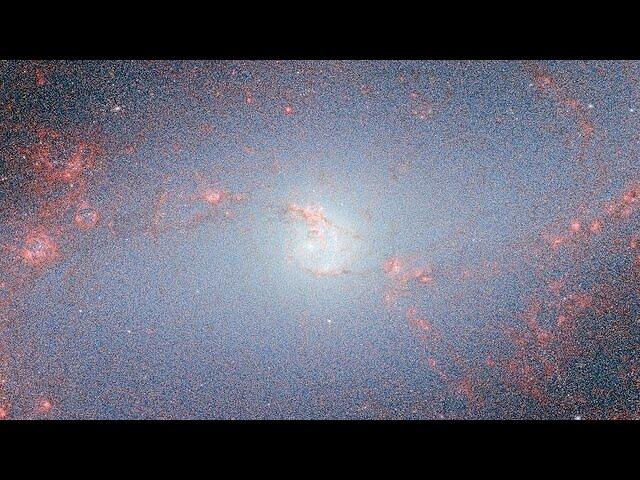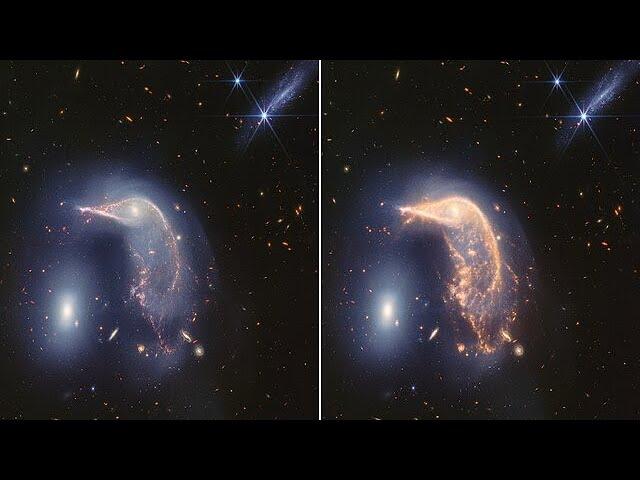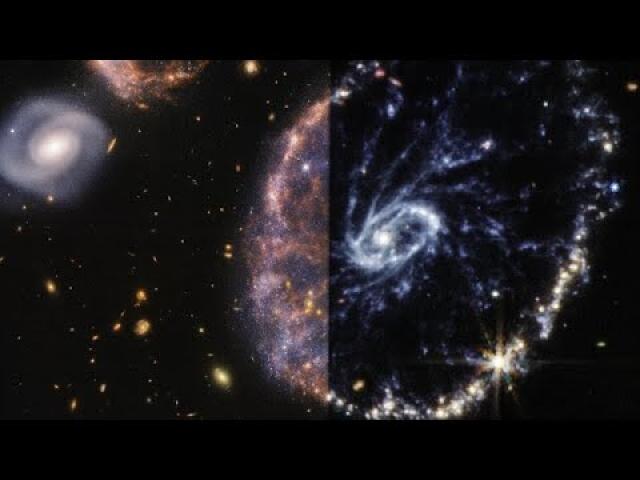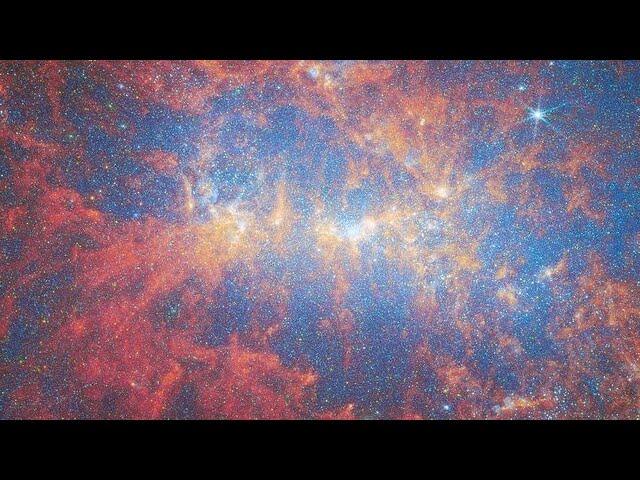Pan: NGC 4449 (NIRCam image)
Description
Featured in this new image from the NASA/ESA/CSA James Webb Space Telescope is the dwarf galaxy NGC 4449. This galaxy, also known as Caldwell 21, resides roughly 12.5 million light-years away in the constellation Canes Venatici. It is part of the M94 galaxy group, which lies close to the Local Group that hosts our Milky Way.
NGC 4449 has been forming stars for several billion years, but it is currently experiencing a period of star formation at a much higher rate than in the past. Such unusually explosive and intense star formation activity is called a starburst and for that reason NGC 4449 is known as a starburst galaxy. In fact, at the current rate of star formation, the gas supply that feeds the production of stars would only last for another billion years or so. Starbursts usually occur in the central regions of galaxies, but NGC 4449 displays more widespread star formation activity, and the very youngest stars are observed both in the nucleus and in streams surrounding the galaxy. It's likely that the current widespread starburst was triggered by interaction or merging with a smaller companion; indeed, astronomers think NGC 4449's star formation has been influenced by interactions with several of its neighbours.
NGC 4449 resembles primordial star-forming galaxies which grew by merging with and accreting smaller stellar systems. Since NGC 4449 is close enough to be observed in great detail, it is the ideal laboratory for astronomers to study what may have occurred during galaxy formation and evolution in the early Universe.
The image was captured by Webb’s NIRCam, or Near-InfraRed Camera. In this image, the bright red spots correspond to regions rich in hydrogen that have been ionised by the radiation from the newly formed stars. The diffuse gradient of blue light around the central region shows the distribution of older stars. The compact light-blue regions within the red ionised gas, mostly concentrated in the galaxy’s outer region, show the distribution of young star clusters.
More information and download options: http://esawebb.org/videos/potm2405b/
Credit:
ESA/Webb, NASA & CSA, A. Adamo (Stockholm University) and the FEAST JWST team, N. Bartmann (ESA/Webb)
Music: Mylonite - Breath of my Soul

